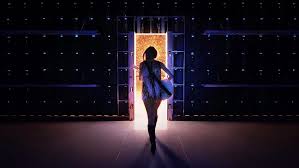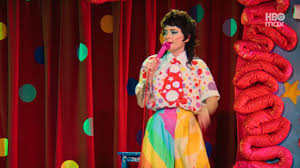The Colors Within 2025 Movie Review
Naoko Yamada ‘s wonderful new film , produced by Science SARU, The Colors Within , is a seemingly simple coming-of-age film whose enriching sensibility is aimed at conveying the transcendental nature of art, particularly music.
Totsuko ( Sayu Suzukawa ), a young student at a Catholic school, has a synesthetic condition that allows her to visualize other people’s vibes in the form of different colors. And no one has a more beautiful color than Kimi ( Akari Takaishi ), a classmate who mysteriously drops out of school. Still intoxicated by her color, Totsuko finds Kimi working at a bookstore and proposes that they form a band; they are joined by Rui ( Taisei Kido ), an introverted young theremin player from a family of doctors.
This is a story about three misfit teenagers who don’t know exactly what to do with their lives and even feel overwhelmed by the expectations their family has of them. They are three people who don’t talk much and, not knowing how to communicate what they feel, find in music the best channel to express themselves and also to strengthen their friendship.
Yamada and her screenwriter Reiko Yoshida’s use of religion enriches the narrative, moving away from using it as an oppressive tool and instead portraying it as a channel for young girls to better understand themselves; the nuns at the school have a relaxed attitude, perhaps not as much as those in Lady Bird , but enough to give the girls the freedom to experiment and express their feelings in music. Through one of them, Totsuko understands the power that music has to celebrate joy, goodness and truth, but also to manifest the melancholy and sorrows of the soul.
The film has a beautiful and immersive visual atmosphere, it is as if its bright colours and use of whites wanted to immerse you in a beautiful dream. The concept of seeing people as specific colours gives The Colors Within a unique visual identity that in turn empowers its narrative discourse. But this element does not remain in the abstract, as the 2D animation has a naturalistic quality that roots the characters; the attention to detail in each environment helps to underline certain feelings or narrative threads, for example, the beautiful and spacious abandoned church in which the band rehearses plays with this contrast between the oppression with which religion is usually associated with the desires for expression and freedom that teenagers have: despite the prejudices we may have, here this environment works as a fertile field for the harvest of friendship and art. The accompanying score by Kensuke Ushio throughout this journey is a small masterpiece.
In The Colors Within , self-discovery, friendship and creativity are expressed in the form of increasingly beautiful colors. Music is a window to the freedom of the soul, it is this tool that can help you take your first steps towards maturity and away from the expectations that others have of you.
The final concert, populated by three songs (each composed by a different band member), is a vibrant manifestation of the path our protagonists have taken up to that point: each song is a sentimental expression, a personal anthem of growth forged with the help of the transcendental power of creativity and friendship.




